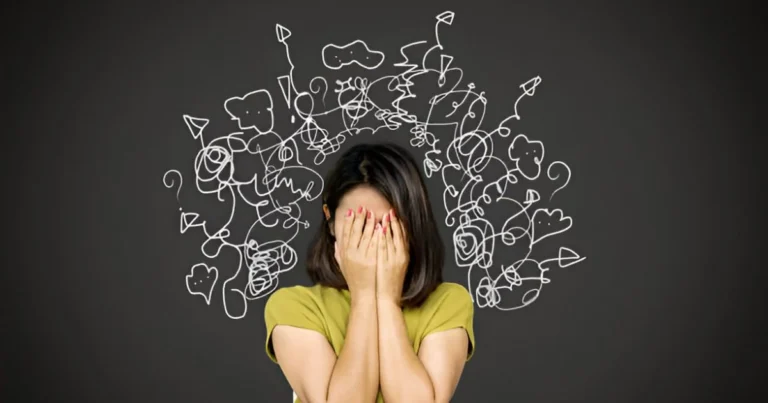Unmasking Anxiety: Why We’re Never Affected the Same Way
Fear is a signal, a primordial alarm etched into the depths of our biological history. As old as humanity itself, it is our safeguard in the face of danger. When a threat arises, our body springs into action: hidden energy reserves are unleashed, ready to propel us forward. In a split second, fear sharpens our senses and prepares every muscle to fight, flee, or confront an obstacle. It warns us, drives us, and can even save us.
However, anxiety is a different story. While fear subsides once the danger disappears, anxiety settles in without warning and persists. It often emerges in the absence of any real threat, taking the form of a diffuse insecurity, a constant inner tension that whispers something is amiss even when everything appears under control. Gradually, anxiety colors one’s perception of reality, triggering an irrational anticipation of imagined dangers and perpetuating a state of lingering fear.
When fear stops mobilizing us and begins to paralyze us, it becomes pathological. Excessive anxiety stifles our resources for action, transforming a rush of alarm into invisible chains that keep us from moving forward. Even everyday tasks become burdensome, quality of life deteriorates, and suffering takes root, both in the body and in psychological functioning.
Anxiety disorders manifest in many forms. Some experience sudden panic attacks, shortness of breath, a racing heart, and a terrifying sense of losing control. Others endure a constant, diffuse cloud of worry that is hard to calm. Whether it’s phobias, generalized distress, or sudden onslaughts, anxiety unfolds in a wide spectrum of intensities and unique expressions.
Anxiety is a paradox: it is universal, yet it presents itself differently in each person. A common alarm, but an infinite variety of possible responses.
Faced with the same situation, some people feel only a fleeting sense of alert, while others are overwhelmed by an uncontrollable wave of emotion. Are we all equal when it comes to anxiety? The answer lies in the uniqueness of our brains, shaped by our genetic heritage, life experiences, and environment. These elements intertwine to produce a response that is uniquely our own.
When biology sets the stage: The genetic roots of anxiety
Are we predisposed to anxiety before we even take our first breath? The truth is, our genes outline a framework, sketching the initial lines of our story, but they do not write the entire narrative. Acting as silent architects of our biology, they influence our sensitivity to anxiety by regulating key neurotransmitters. Consider serotonin, often called the happy hormone, or GABA, our natural brake on emotional overload. A simple malfunction in these systems can transform a fleeting emotion into a persistent storm, fueled by an overactive amygdala, this small brain structure responsible for detecting threats. Still, it would be an oversimplification to reduce our vulnerability to a single genetic mechanism. Epigenetics, a fascinating field of research, shows that our genes are influenced by the environment.
Our experiences, our relationships, and even our earliest encounters within the womb shape how our genes are expressed. If our genetic makeup sometimes lights the fuse, our environment determines the flame’s size and intensity.
Researchers agree that the causes of anxiety disorders are multifactorial. Beyond genetics, there is a constellation of biological, psychological, and environmental factors interacting. Certain individuals, by virtue of their biology, have more fragile nervous systems and heightened sensitivity to stress, lowering their tolerance threshold.
Periods of prenatal stress, for instance, can be a major factor, because they occur when the fetus is exceptionally sensitive to environmental influences. Maternal stress leads to higher levels of cortisol, an hormone that crosses the placenta and enters the fetus’s bloodstream. This can disrupt brain development, affecting both the structure and function of regions crucial for emotional regulation and cognitive abilities.
A study by Van den Bergh and Alfons Marcoen at the Catholic University of Louvain showed how timing of stress is critical. Children aged 8 to 9, whose mothers experienced stressful events between the 12th and 22nd weeks of pregnancy, exhibited higher levels of anxiety compared to those exposed later, between the 32nd and 40th weeks. Early pregnancy stress seems to coincide with critical phases of nervous system development, leaving long-term marks that can linger into adulthood.
Mirror in the mind: What twins reveal about anxiety
To disentangle the complex interplay of heredity and environment in the development of anxiety disorders, researchers often turn to identical twins, an extraordinary natural model for distinguishing genetic factors from environmental ones.
Studies consistently show that monozygotic twins, who share 100% of their genes, have significantly higher concordance rates for anxiety disorders than dizygotic twins, who share only 50% of their genes. In other words, if one monozygotic twin develops an anxiety disorder, the probability that the other twin will also have it is much higher compared to dizygotic pairs. For instance, studies on generalized anxiety disorder report concordance rates of 30–50% in monozygotic twins, versus only 15–20% in dizygotic twins. These figures clearly underscore the influence of genetic factors in predisposition to anxiety.
Nevertheless, genetics is not the whole story. If concordance rates among monozygotic twins are not 100%, it means the environment also shapes the onset of anxiety disorders. Life experiences, close relationships, traumatic events, and stress levels all play a pivotal role. This highlights the concept of “shared vulnerability,” where genetics and environment interact to determine a person’s emotional trajectory.
Researchers have even observed that, in some cases, monozygotic twins who grow up in different environments show very different anxiety levels. This proves that, even with an identical genetic foundation, personal experiences can modulate gene expression.
Twin studies have also been instrumental in the major advances of epigenetics. This area of research shows that environmental factors, such as stress, nutrition, or trauma, can switch certain genes on or off, influencing how they are expressed. For instance, among monozygotic twins, differences in exposure to stressful events can lead to strikingly different anxiety profiles, despite sharing the same DNA. Ultimately, an anxiety disorder never arises from a single cause. It is the product of a complex alchemy between psychological traits, genetic predispositions, and adverse life experiences that pave the way for anxious behavior. Common triggers include financial troubles, family conflicts, or lack of emotional support, gradually undermining individuals who are already vulnerable.
Building bonds, building resilience: why early attachment matters
Beyond these environmental factors, early interpersonal relationships play a crucial role in shaping one’s vulnerability to anxiety. From the first moments of life, children are born not only with biological needs but also with a fundamental need for emotional security. This need is met through the attachment bond formed with a primary caregiver, often the mother or a close parental figure. It is within this daily interaction that children learn to understand the world, explore it without fear, and regulate their emotions.
According to John Bowlby’s attachment theory, a child who experiences a secure attachment, where their needs are consistently acknowledged, accepted, and met, develops an internal sense of safety. This sense of security becomes an emotional anchor that allows the child to trust, explore the environment, and gain independence. Secure attachment serves as a protective shield against stress, frustration, and life’s uncertainties. On the other hand, when this relationship is insufficient, unstable, or unpredictable, a child develops insecure attachment.
Numerous studies highlight the predictive power of insecure attachment in the onset of anxiety disorders.
One notable study, which followed 172 children from 12 months old to 17 and a half years, yielded significant findings: anxious attachment observed at 12 months greatly increased the risk of anxiety disorders in adolescence. The reason lies in the remarkable plasticity of a child’s brain at this early age, when emotional circuits are heavily influenced by primary interactions. When those early interactions foster insecurity or ambiguity, they unconsciously program exaggerated stress responses in the face of life’s future challenges. Lacking a secure foundation during this sensitive phase can leave a lasting mark on a child’s ability to manage emotions and navigate environmental demands.
Timid by design? Exploring the roots of behavioral inhibition
Another factor often linked to childhood anxiety disorders is behavioral inhibition. This trait is characterized by excessive shyness, pronounced reserve, and a tendency to withdraw from new or seemingly threatening situations. Research indicates that behavioral inhibition is more common in children whose parents themselves struggle with anxiety. These parents, shaped by their own fears, frequently display overprotective and overly controlling behavior. While driven by a genuine desire to safeguard their children, this approach restricts a child’s freedom to explore the world and develop independence. Under this overly protective shield, behavioral inhibition takes root and becomes a stable trait, amplifying a child’s vulnerabilities.
Paradoxically, in trying to protect their offspring from real or imagined threats, such parents inadvertently encourage emotional dependence and low self-esteem. Deprived of opportunities to overcome minor obstacles, the child becomes less able to handle adversity and more prone to enduring anxiety.
In this way, our genes, no matter how influential, are only incomplete sketches of our emotional destiny. They outline predispositions like a distant murmur, but our personal histories, relationships, and environment ultimately shape the final composition. Anxiety, standing at the crossroads of biological inheritance and lived experiences, is both a legacy and a construction. Although a certain susceptibility may be etched into our biology, it is far from a foregone conclusion: it can be managed, modulated, and sometimes transcended through resilience, a supportive environment, and profound self-awareness. In short, where genetics merely sketches the framework, life always offers an opportunity to redraw its contours.
References
Daniel F. Levey et al. (2020). Reproducible Genetic Risk Loci for Anxiety: Results From ∼200,000 Participants in the Million Veteran Program. American Journal of Psychiatry; appi.ajp.2019.1.
Bolton D et al. (2006). Prevalence and genetic and environmental influences on anxiety disorders in 6-year-old twins. Psychological Medicine, 36, 335-344.
Van den Bergh et al. (2004). High Antenatal Maternal Anxiety Is Related to ADHD Symptoms, Externalizing Problems, and Anxiety in 8- and 9-Year-Olds; Volume 75, Issue 4, pages 1085–1097.








